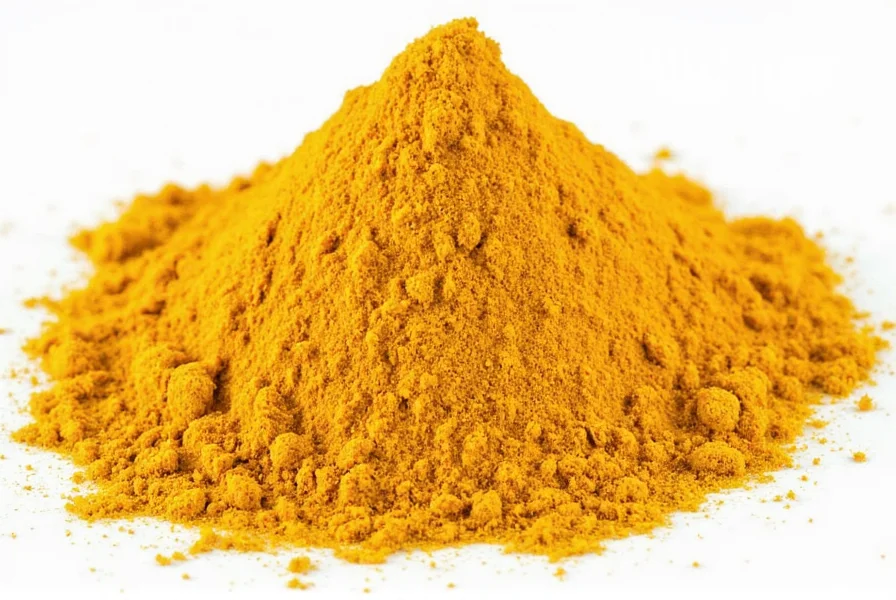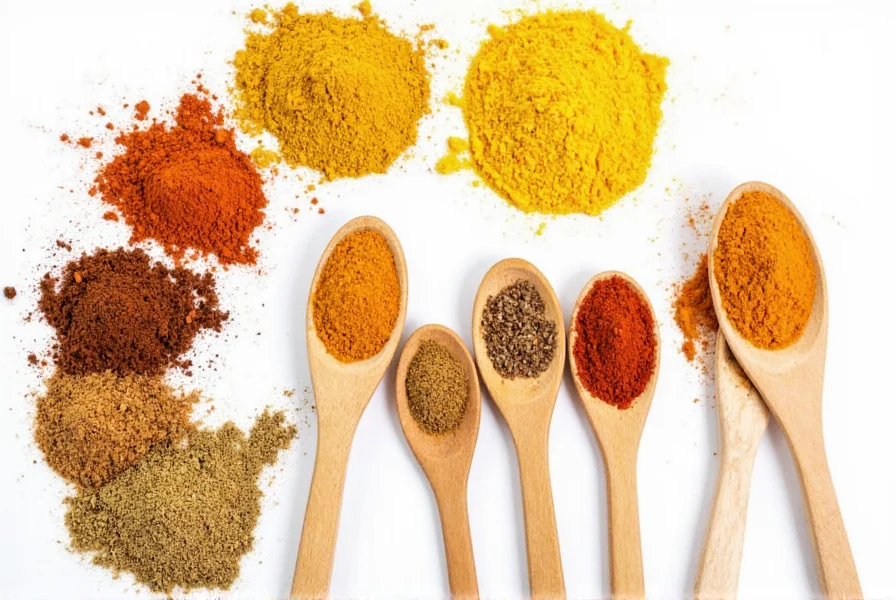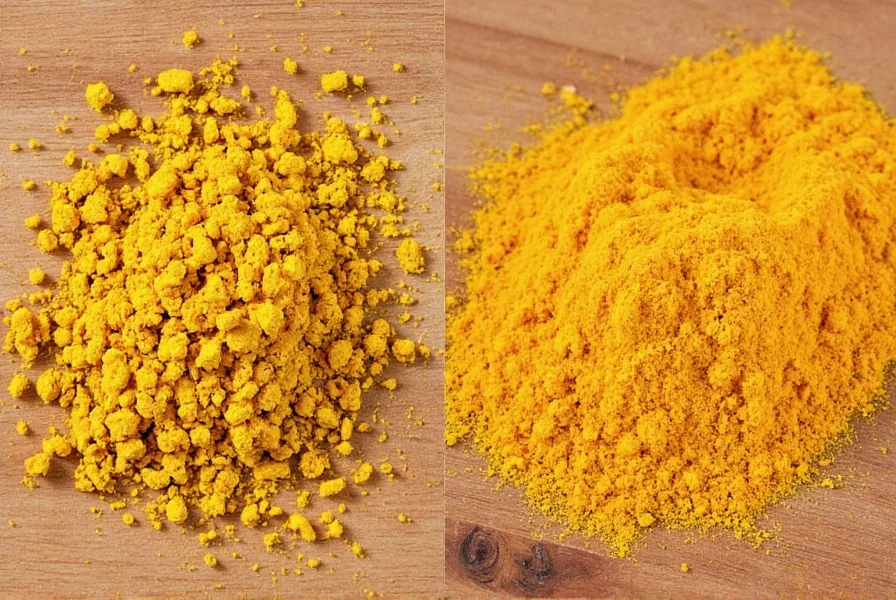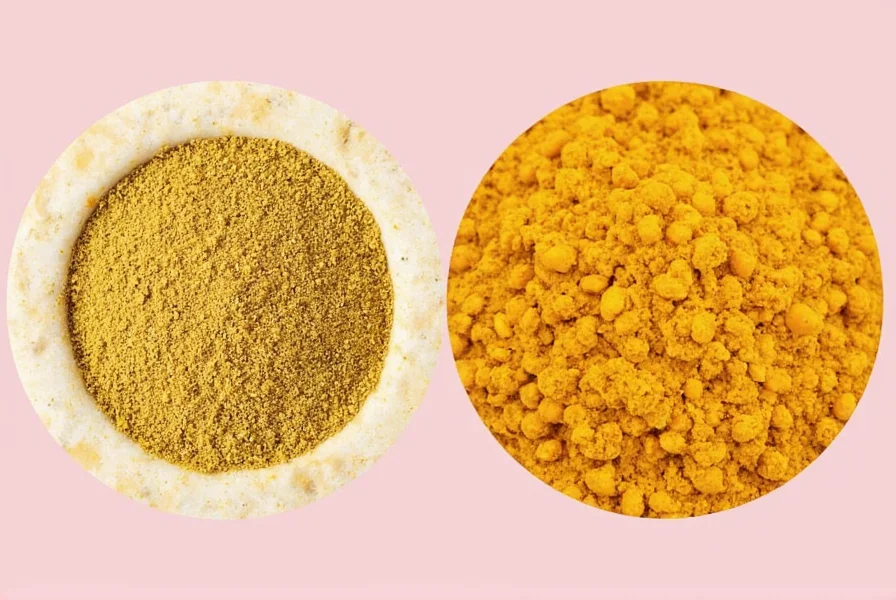Looking for a turmeric substitute? Whether you're making curry, rice dishes, or soups, these 7 spices can perfectly replace turmeric's vibrant color and earthy flavor. This guide covers each substitute's flavor profile, color match, best uses, and how to choose the right one for your recipe.
Table of Contents
- Why Replace Turmeric?
- Top 7 Spice Alternatives to Turmeric
- Turmeric Substitute Comparison Table
- How to Choose the Right Turmeric Substitute
- Best Substitutes by Recipe Type
- Frequently Asked Questions About Turmeric Substitutes
- Conclusion
Why Replace Turmeric?
Turmeric is a beloved spice known for its earthy flavor and vibrant yellow hue, largely due to curcumin—the compound responsible for many of its health benefits. But not everyone has turmeric on hand, and sometimes, you might want a different taste profile or a milder color.
Whether you're out of turmeric mid-recipe, avoiding its strong bitterness, or simply experimenting with flavors, having a few go-to replacements in your pantry is a smart move. Let's take a look at the top alternatives that can stand in for turmeric without compromising flavor or aesthetics.

Top 7 Spice Alternatives to Turmeric
1. Saffron
Saffron is one of the most luxurious substitutes for turmeric, offering a similar golden hue but with a completely different flavor profile. It brings a floral, slightly sweet note to dishes, making it ideal for rice dishes like paella or risotto.
- Flavor: Delicate, floral, slightly sweet
- Color: Rich gold
- Best For: Rice dishes, seafood, sauces
- Potential Downside: Expensive and hard to source in some regions
2. Paprika
Available in sweet, smoked, and hot varieties, paprika offers a mild alternative to turmeric. While it doesn’t provide the same earthiness, it adds warmth and a beautiful red-orange color.
- Flavor: Mild, sweet, smoky (depending on type)
- Color: Reddish-orange
- Best For: Stews, soups, roasted vegetables
- Potential Downside: Lacks the peppery edge of turmeric
3. Annatto (Achiote)
Common in Latin American and Caribbean cuisines, annatto seeds are used to make a paste or infused oil that gives food a bright orange-yellow color. It has a subtle peppery, nutty flavor.
- Flavor: Nutty, peppery, slightly floral
- Color: Orange-yellow
- Best For: Tamales, stews, grilled meats
- Potential Downside: May need preparation (e.g., oil infusion)

4. Safflower
This lesser-known option is often used as a cheaper saffron substitute and provides a vivid yellow color. However, its flavor is almost neutral, so it’s best when you only need color.
- Flavor: Mild, slightly bitter
- Color: Bright yellow
- Best For: Pickling, color boosting in sauces
- Potential Downside: Minimal flavor impact
5. Mustard Powder
While not a perfect match in appearance, mustard powder can mimic turmeric’s slight pungency and tang. It turns darker when cooked, so it’s best in recipes where color isn't crucial.
- Flavor: Tangy, sharp
- Color: Light brownish-yellow
- Best For: Curries, dressings, dry rubs
- Potential Downside: Less vibrant color and stronger bite
6. Cumin + Cayenne Combo
A blend of cumin and cayenne pepper won’t replicate turmeric exactly, but together they offer an earthy-spicy kick that works well in many Indian or Middle Eastern dishes.
- Flavor: Earthy, spicy
- Color: Brownish-red
- Best For: Spiced grains, lentils, curries
- Potential Downside: No golden color; needs extra balancing
7. Ground Carrots or Sweet Potato
For those seeking a natural, whole-food approach, pureed ground carrots or sweet potato can mimic turmeric’s color and add sweetness to the dish. It’s especially useful in vegan or paleo cooking.
- Flavor: Mildly sweet
- Color: Golden-orange
- Best For: Soups, stews, smoothies
- Potential Downside: Alters texture slightly

| Substitute | Flavor Profile | Color Match | Best Use Case | Drawbacks |
|---|---|---|---|---|
| Saffron | Delicate, floral, slightly sweet | Excellent | Rice dishes, seafood | Expensive, hard to find |
| Paprika | Mild, smoky or sweet | Moderate | Stews, soups, veggies | No earthy depth |
| Annatto | Nutty, peppery | Good | Latin dishes, meats | Requires prep |
| Safflower | Mild, slightly bitter | Good | Color boost, pickling | Lack of flavor |
| Mustard Powder | Sharp, tangy | Fair | Dressings, dry rubs | Darkens when cooked |
| Cumin + Cayenne | Earthy, spicy | Poor | Curries, grain dishes | No color match |
| Ground Carrots | Mildly sweet | Moderate | Vegan dishes, soups | Alters texture |
How to Choose the Right Turmeric Substitute
When selecting a spice to replace turmeric, consider these key factors:
1. Flavor Needs
Ask yourself: Do you want a similar earthy note? Or are you okay with something more delicate or bold? If you’re aiming for a rich, warm base, options like cumin + cayenne or annatto might be better than saffron or safflower.
2. Color Importance
If visual appeal is a must (like for a curry served at a dinner party), prioritize color-matching substitutes like saffron, annatto, or safflower. These will keep your dish looking vibrant without altering flavor too much.
3. Dietary Restrictions
Vegan, paleo, or gluten-free diets can influence your choice. Ground carrots or sweet potatoes are excellent plant-based options. Meanwhile, saffron and annatto are naturally vegan-friendly.
4. Budget & Availability
Saffron may be off the table if you're on a budget. Opt for more accessible options like paprika, which is widely available and affordable in both regular and smoked versions.
5. Recipe Type
Is it a hearty stew or a delicate sauce? Lean toward bolder spices like cumin-cayenne in heartier meals and subtler ones like saffron or safflower in lighter dishes.

Best Substitutes by Recipe Type
- Golden Rice Recipes: Saffron or annatto for authentic color and aroma.
- Curries and Lentil Dishes: Cumin + cayenne combo or mustard powder for depth and heat.
- Vegetable Roasts: Smoked paprika for a smoky-sweet finish.
- Smoothies or Soups: Ground carrots or sweet potato for natural color and nutrients.
- Homemade Pickles: Safflower for a yellow tint without overpowering flavor.
Frequently Asked Questions About Turmeric Substitutes
What is the best spice to replace turmeric when I need both color and flavor?
Saffron is arguably the best substitute when you need both vibrant color and complementary flavor, though it's expensive. For a more budget-friendly option, annatto provides excellent color with a mild nutty flavor. If you're making Indian dishes specifically, a combination of cumin and a small amount of cayenne can provide similar earthy-spicy notes, though the color won't match turmeric's golden hue.
Can I use paprika instead of turmeric in curry?
Yes, you can use paprika as a turmeric substitute in curry, but with some considerations. Sweet paprika will provide color but lacks turmeric's earthiness. Smoked paprika adds a different dimension of flavor that may not be traditional in all curries. For best results in curry, consider using paprika along with a small amount of mustard powder or cumin to better approximate turmeric's flavor profile. Keep in mind that paprika gives a more reddish-orange color rather than turmeric's golden yellow.
What gives turmeric its yellow color and what alternatives provide similar color?
Turmeric's vibrant yellow color comes from curcumin, its main active compound. The best color substitutes are saffron (which provides a golden hue), annatto (which gives an orange-yellow color), and safflower (which offers bright yellow coloring). Ground carrots or sweet potato can also provide a natural golden-orange color, though they'll add sweetness to your dish. None of these perfectly replicate turmeric's exact shade, but they come close depending on your recipe needs.
Is there a cheaper alternative to turmeric that provides similar health benefits?
Turmeric is actually quite affordable compared to many spices, but if you're specifically seeking alternatives for health benefits, it's important to understand that none of the substitutes provide the same curcumin content that gives turmeric its well-known anti-inflammatory properties. For similar health profiles, there isn't a direct cheaper substitute. However, many of the alternatives like cumin, paprika, and saffron have their own health benefits. If budget is your main concern and color is your priority, safflower or annatto might be more cost-effective options for coloring foods.
Can I leave turmeric out of a recipe entirely without substitution?
Yes, you can omit turmeric from most recipes without needing a direct substitute, but this depends on the dish. In many curries and Indian dishes, turmeric provides both color and a subtle earthy background note. If you leave it out completely, the dish may appear paler and lack some depth of flavor. In recipes where turmeric is used primarily for color (like mustard or rice dishes), consider one of the color-focused substitutes. In spice-heavy dishes with many other ingredients, omitting turmeric may have minimal impact on the overall flavor profile.
What's the difference between using fresh turmeric and powdered turmeric when considering substitutes?
Fresh turmeric has a more vibrant, slightly ginger-like flavor with citrus notes compared to the earthier, more concentrated powder. When substituting for fresh turmeric, you'd want options with more pronounced flavor like mustard powder or the cumin-cayenne blend rather than color-focused substitutes like safflower. For powdered turmeric substitution, you have more flexibility with both flavor and color substitutes since the powder is primarily used for its color and earthy background notes. Generally, 1 teaspoon of powdered turmeric equals about 1 tablespoon of freshly grated turmeric.
Conclusion
Replacing turmeric doesn’t mean sacrificing flavor or color—in fact, it can be a fun way to experiment with new tastes and textures. From luxurious saffron to humble carrots, there’s a substitute out there that fits every recipe and palate. Armed with this guide, you’re ready to spice things up, even when your turmeric jar runs dry.
So next time you ask, "What spice can I use instead of turmeric?" remember—it's not just about finding a replacement, it's about discovering new culinary possibilities. Happy cooking!












 浙公网安备
33010002000092号
浙公网安备
33010002000092号 浙B2-20120091-4
浙B2-20120091-4